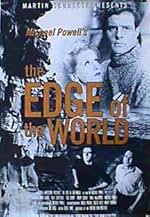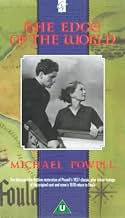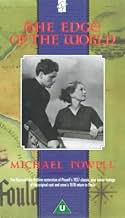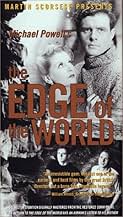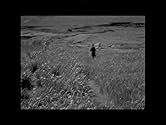CALIFICACIÓN DE IMDb
7.3/10
2.2 k
TU CALIFICACIÓN
La forma de vida está desapareciendo en el puerto pesquero de una isla de las Hébridas Exteriores, pero algunos de los habitantes se resisten a evacuar al continente.La forma de vida está desapareciendo en el puerto pesquero de una isla de las Hébridas Exteriores, pero algunos de los habitantes se resisten a evacuar al continente.La forma de vida está desapareciendo en el puerto pesquero de una isla de las Hébridas Exteriores, pero algunos de los habitantes se resisten a evacuar al continente.
- Premios
- 1 premio ganado y 1 nominación en total
Niall MacGinnis
- The Gray Family: Andrew, His Son
- (as Niall Macginnis)
James Garrioch
- Doctor Attending Ruth's Baby in Lerwick
- (sin créditos)
Andy Gear
- Villager in Evacuation
- (sin créditos)
Mima Gear
- Villager in Evacuation
- (sin créditos)
Wullie Gear
- Fiddler at Hirta Reel
- (sin créditos)
Aggie Jean Gray
- Member of the Congregation
- (sin créditos)
Agnes 'Nannie' Gray
- Member of the Congregation
- (sin créditos)
Edith Gray
- Member of the Congregation
- (sin créditos)
James Andrew Gray
- Member of the Congregation
- (sin créditos)
Jean 'Jeannie' Gray
- Member of the Congregation
- (sin créditos)
- Dirección
- Guionistas
- Todo el elenco y el equipo
- Producción, taquilla y más en IMDbPro
Argumento
¿Sabías que…?
- TriviaIn the scene of the race up the cliffs, the actors did their own climbing. According to director Michael Powell's book on the making of the film, Eric Berry in particular did some risky work indeed, especially in the shots of him clambering up the waterfall.
- ErroresThe wild Golden Eagle at the beginning has the falconer's jesses (leather straps) visible.
- Citas
The Gray Family: Andrew, His Son: Do you think I don't care about Robbie? Do you think I'd forget that he was your twin brother and my best friend?
- Créditos curiosos[before opening credits] The slow shadow of Death is falling on the outer isles of Scotland. [scrolls up] This is the story of one of them -- and all of them. When the Roman Fleet first sailed round Britain they saw from the Orkneys a distant island, like a blue haze across a hundred miles of sea. They called it - "ULTIMA THULE" [main title] THE EDGE OF THE WORLD
- ConexionesFeatured in Return to the Edge of the World (1978)
- Bandas sonorasChorus
(uncredited)
Composer unknown
Performed by The Glasgow Orpheus Choir
Conducted by Hugh S. Roberton
Opinión destacada
After six years slumming it in the so-called "quota quickies" (cheap films made to satisfy a domestic produce law), this was Michael Powell's first personal and independent production. It is the beginning of his love affair with the Scottish isles, his partnership with a number of distinguished actors and crew members, and demonstrates the rhythmic style that would become his trademark.
The first thing that stands out about Edge of the World is its documentary feel. The story itself is a fairly brief tale, but Powell bulks out the runtime by showing off the natural beauty and detailing the vanishing ways of life. It's not something Powell would do a lot in his later career, but it shows his reverence for the subject matter, and also an unbridled state of his purely visual form of storytelling. This is as far as I know the only one of his films for which Powell took sole screen writing credit. Film as a purely visual narrative was his aesthetic, and you could probably fit all the dialogue on about half a dozen pages of script. While the imagery is consistently strong, Powell would generally make better films when his personality was balanced out by the powerful screenplays of Emeric Pressburger.
However, thanks to the lack of dialogue we really get a taste of Powell's sensitivity to rhythm. The steady flow of images that set each scene is reminiscent of early DeMille, which occasionally give way to snappier, almost Hitchcockian editing patterns for the tenser moments. Of course an honourable mention must go to editor Derek Twist for collating all the images for maximum effect. Two scenes are directed with incredible tenderness by Powell. First is the funeral, shot through a mist like effect which enhances the sombre tone. The second is the moment where John Laurie finds out his daughter is pregnant. Tension is built up only to be released with a surprisingly humane response from Laurie. There are still one or two touches of clumsiness, where the angling of shots makes it a bit confusing who is where for example when Eric Berry and Belle Chrystall watch Niall MacGinnis wandering dangerously near the cliff edge. This could be down to inexperience, or it could simply be due to the on-the-fly nature of the production. After all, how do you view your rushes when your stuck on a little island? Whatever the case, such problems would not recur in Powell's work.
The only real sour note in Edge of the World is, unfortunately, the acting. While Finlay Currie gives his usual steadiness to the proceedings, and of course John Laurie is of course good whenever you need a slightly exaggerated, wild-eyed Scot (although this is in fact one of his deepest performances), the general standard is poor. No-one else really stands out, and surprisingly the young Niall MacGinnis is absolutely appalling. With his inability to master the accent and, it would appear, the general concept of acting, he here looks as if he just walked off the set of Brigadoon.
Overall though this is a gripping and haunting work. It may occasionally be a little rough around the edges, and is often a bit too showy, but you can see in this little film that this is the man who would one day turn opera into cinematic spectacle. This is essential viewing for all fans of Michael Powell.
The first thing that stands out about Edge of the World is its documentary feel. The story itself is a fairly brief tale, but Powell bulks out the runtime by showing off the natural beauty and detailing the vanishing ways of life. It's not something Powell would do a lot in his later career, but it shows his reverence for the subject matter, and also an unbridled state of his purely visual form of storytelling. This is as far as I know the only one of his films for which Powell took sole screen writing credit. Film as a purely visual narrative was his aesthetic, and you could probably fit all the dialogue on about half a dozen pages of script. While the imagery is consistently strong, Powell would generally make better films when his personality was balanced out by the powerful screenplays of Emeric Pressburger.
However, thanks to the lack of dialogue we really get a taste of Powell's sensitivity to rhythm. The steady flow of images that set each scene is reminiscent of early DeMille, which occasionally give way to snappier, almost Hitchcockian editing patterns for the tenser moments. Of course an honourable mention must go to editor Derek Twist for collating all the images for maximum effect. Two scenes are directed with incredible tenderness by Powell. First is the funeral, shot through a mist like effect which enhances the sombre tone. The second is the moment where John Laurie finds out his daughter is pregnant. Tension is built up only to be released with a surprisingly humane response from Laurie. There are still one or two touches of clumsiness, where the angling of shots makes it a bit confusing who is where for example when Eric Berry and Belle Chrystall watch Niall MacGinnis wandering dangerously near the cliff edge. This could be down to inexperience, or it could simply be due to the on-the-fly nature of the production. After all, how do you view your rushes when your stuck on a little island? Whatever the case, such problems would not recur in Powell's work.
The only real sour note in Edge of the World is, unfortunately, the acting. While Finlay Currie gives his usual steadiness to the proceedings, and of course John Laurie is of course good whenever you need a slightly exaggerated, wild-eyed Scot (although this is in fact one of his deepest performances), the general standard is poor. No-one else really stands out, and surprisingly the young Niall MacGinnis is absolutely appalling. With his inability to master the accent and, it would appear, the general concept of acting, he here looks as if he just walked off the set of Brigadoon.
Overall though this is a gripping and haunting work. It may occasionally be a little rough around the edges, and is often a bit too showy, but you can see in this little film that this is the man who would one day turn opera into cinematic spectacle. This is essential viewing for all fans of Michael Powell.
- Steffi_P
- 30 sep 2008
- Enlace permanente
Selecciones populares
Inicia sesión para calificar y agrega a la lista de videos para obtener recomendaciones personalizadas
- How long is The Edge of the World?Con tecnología de Alexa
Detalles
Taquilla
- Presupuesto
- GBP 20,000 (estimado)
- Tiempo de ejecución1 hora 21 minutos
- Color
- Relación de aspecto
- 1.37 : 1
Contribuir a esta página
Sugiere una edición o agrega el contenido que falta

Principales brechas de datos
By what name was The Edge of the World (1937) officially released in India in English?
Responda
